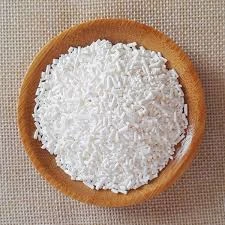
styrene butadiene rubber
Styrene-Butadiene Rubber Properties, Applications, and Advancements
Styrene-butadiene rubber (SBR) is a synthetic rubber that has gained popularity in various industries due to its excellent properties and versatility. Composed of styrene and butadiene monomers, this copolymer exhibits a unique combination of characteristics that make it an ideal choice for a wide range of applications.
Styrene-Butadiene Rubber Properties, Applications, and Advancements
In addition to its application in tires, SBR is widely used in the manufacturing of footwear, adhesives, coatings, and seals. Its flexibility and ease of processing allow it to be molded into complex shapes, making it an attractive option for manufacturers seeking reliable and innovative materials. The rubber's resistance to various chemicals and environmental factors further enhances its appeal, allowing it to withstand harsh conditions while maintaining its integrity.
styrene butadiene rubber

Another important advantage of SBR is its cost-effectiveness. Compared to natural rubber, SBR offers comparable properties at a generally lower price point. This economic benefit has led to increased adoption of SBR in industries ranging from automotive to construction, where budget constraints often play a crucial role in material selection.
Recent advancements in technology have also contributed to the evolution of SBR. The development of high-performance SBR variants, such as solution-polymerized SBR, has expanded its applications even further. These innovations allow for improved processing characteristics and enhanced physical properties, making SBR suitable for specialized applications, including high-stress environments.
Moreover, with the growing emphasis on sustainability and environmental responsibility, researchers are investigating bio-based alternatives and recycling methods for SBR production. This shift aligns with global trends toward reducing reliance on fossil fuels and minimizing waste. The potential for utilizing renewable feedstocks could not only enhance the sustainability of SBR but also help mitigate environmental impacts associated with traditional rubber production.
In conclusion, styrene-butadiene rubber stands out as a versatile and essential material in the modern industrial landscape. With its unique blend of properties—such as durability, flexibility, and cost-effectiveness—SBR continues to pave the way for innovations across various sectors. As research progresses and new technologies emerge, the future of SBR looks promising, with increased use in sustainable practices and advanced applications. Whether in tires, footwear, or specialized products, SBR remains a vital component of synthetic rubber technology, reflecting the ongoing evolution of materials science.
-
Pure Sodium Dichloroisocyanurate Dihydrate | Powerful DisinfectantNewsAug.29,2025
-
Industrial Chemicals: Quality & Purity for Every IndustryNewsAug.28,2025
-
Nitrile Rubber Honoring Strict Production StandardsNewsAug.22,2025
-
Aspartame Ingredients Honoring Food Safety ValuesNewsAug.22,2025
-
Fertilizer for Balanced Plant NutritionNewsAug.22,2025
-
Cyanide Gold Processing with High Purity AdditivesNewsAug.22,2025
-
Formic Acid in Textile Dyeing ApplicationsNewsAug.22,2025
Hebei Tenger Chemical Technology Co., Ltd. focuses on the chemical industry and is committed to the export service of chemical raw materials.
-

view more DiethanolisopropanolamineIn the ever-growing field of chemical solutions, diethanolisopropanolamine (DEIPA) stands out as a versatile and important compound. Due to its unique chemical structure and properties, DEIPA is of interest to various industries including construction, personal care, and agriculture. -

view more TriisopropanolamineTriisopropanolamine (TIPA) alkanol amine substance, is a kind of alcohol amine compound with amino and alcohol hydroxyl, and because of its molecules contains both amino and hydroxyl. -

view more Tetramethyl Thiuram DisulfideTetramethyl thiuram disulfide, also known as TMTD, is a white to light-yellow powder with a distinct sulfur-like odor. It is soluble in organic solvents such as benzene, acetone, and ethyl acetate, making it highly versatile for use in different formulations. TMTD is known for its excellent vulcanization acceleration properties, which makes it a key ingredient in the production of rubber products. Additionally, it acts as an effective fungicide and bactericide, making it valuable in agricultural applications. Its high purity and stability ensure consistent performance, making it a preferred choice for manufacturers across various industries.





